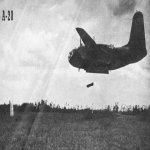The various world militaries often do the same thing with old, worn-out ships, expend them as targets for bombs, missiles, torpedoes, etc.
It's realistic training, and probably less expensive than sending the ships to the breakers (it costs a lot of money to remove weapons systems, asbestos, etc etc). Hell, even Essex-class carriers have been sunk as targets, artificial reefs, and diving sites.
I think it's a more fitting end for the old warbirds and ships than being broken up for scrap/recycling.
It's realistic training, and probably less expensive than sending the ships to the breakers (it costs a lot of money to remove weapons systems, asbestos, etc etc). Hell, even Essex-class carriers have been sunk as targets, artificial reefs, and diving sites.
I think it's a more fitting end for the old warbirds and ships than being broken up for scrap/recycling.



























































































